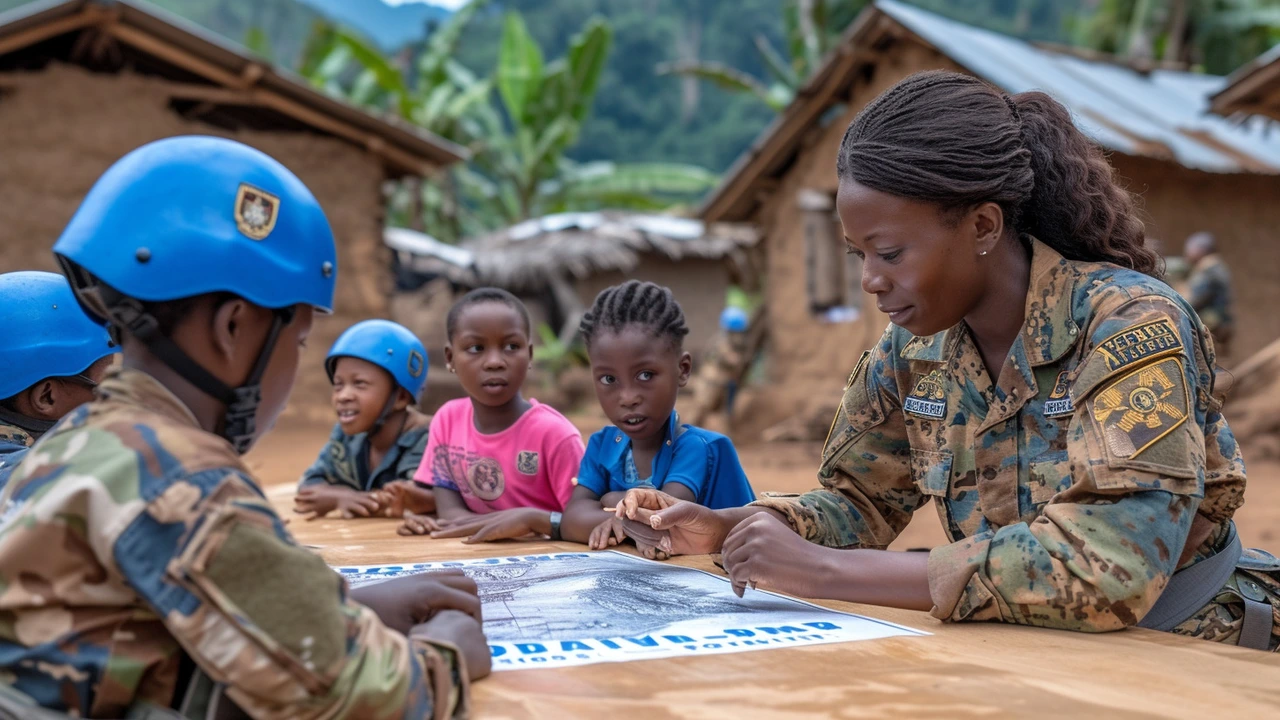What holds a community together after violence stops? Social cohesion — the trust, shared rules, and ties between people — is the answer. Without it, ceasefires can collapse, old grudges flare up, and rebuilding stalls. This page explains what social cohesion looks like in practice and gives clear steps peacekeepers, NGOs, and local leaders can use to strengthen it.
Strong social ties reduce the chance of a return to violence. When people trust local institutions and each other, they report crimes, cooperate with community projects, and resist recruitment by spoilers. Peacekeepers who ignore social cohesion may secure areas militarily but fail to prevent renewed conflict. So the goal isn’t just fewer weapons on the street — it’s better relationships among neighbors and between citizens and institutions.
Think of cohesion as three practical parts: relationships (how groups interact), institutions (how fair and trusted services are), and inclusion (who gets a voice). A school rebuilt without input from local groups may sit empty. A market that excludes one group will fuel resentment. Peacekeeping plans that address these parts work better and last longer.
Protecting civilians is the first step, but you can do more. Set up local dialogue forums where different communities meet regularly to discuss small, concrete problems (water, market access, road repairs). Use joint quick-impact projects — like fixing a bridge or a health clinic — that require members of different groups to work together and share benefits.
Support fair local institutions. Help municipal offices improve transparent processes for IDs, land claims, and permits. When people see services applied equally, trust grows fast. Train local police on community policing and oversight so citizens feel safer and can raise complaints without fear.
Invest in youth and women’s initiatives. Young people are often most at risk of joining armed groups. Offer vocational training, sports programs, or paid short-term work that brings youth from different communities together. Women’s groups can act as early-warning networks and play a big role in reconciliation and local governance.
Use simple measures to track progress: community surveys on trust, rates of joint community events, the number of cross-group complaints resolved, school attendance across groups. Share results publicly — transparency builds confidence.
Small wins matter. A repaired water pump that serves everyone, a mediated land dispute that ends in a public agreement, or a mixed-community market day are concrete signals people notice. These add up and change expectations about living together.
Explore the posts under this tag for real stories, mission lessons, and practical tips from the field. If you want tools or examples for a specific context, tell us which country or challenge you’re focused on, and we’ll point you to the most relevant pieces.

This article explores the significant impact of peacekeeping efforts on community development. It delves into how peacekeeping not only resolves conflicts but also fosters social cohesion, infrastructure development, and economic growth. From enhancing security to building trust among community members, the benefits of structured peacekeeping are manifold. Through various initiatives, such as mediating disputes and supporting local governance, peacekeeping plays a crucial role in paving the way for sustainable development and a harmonious society.
